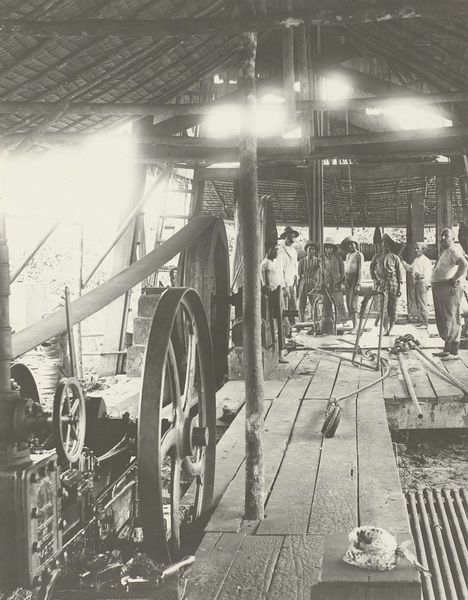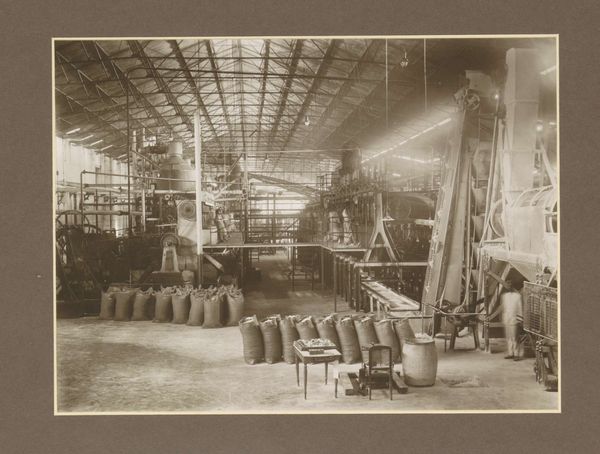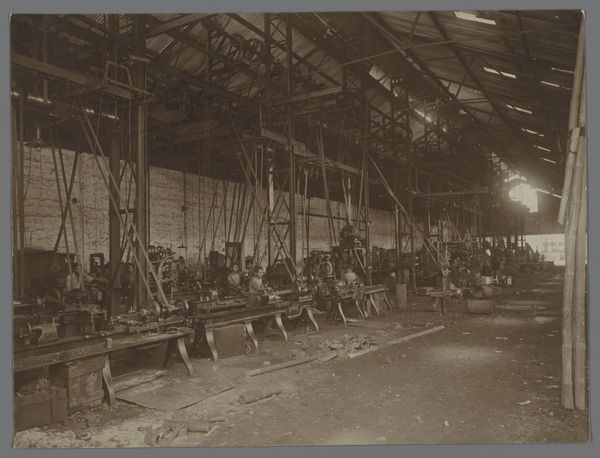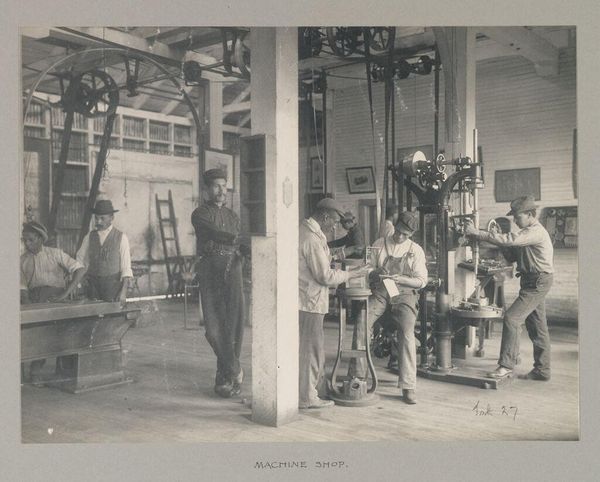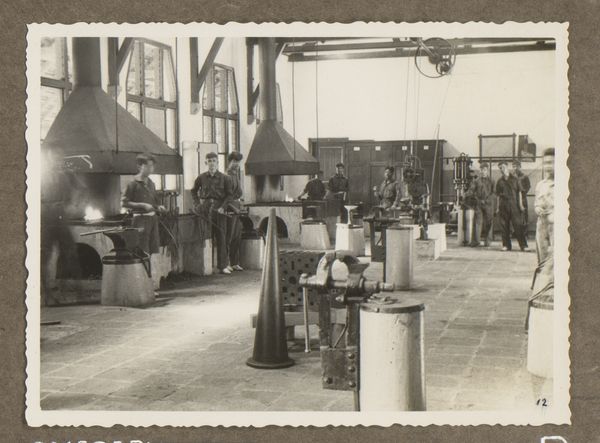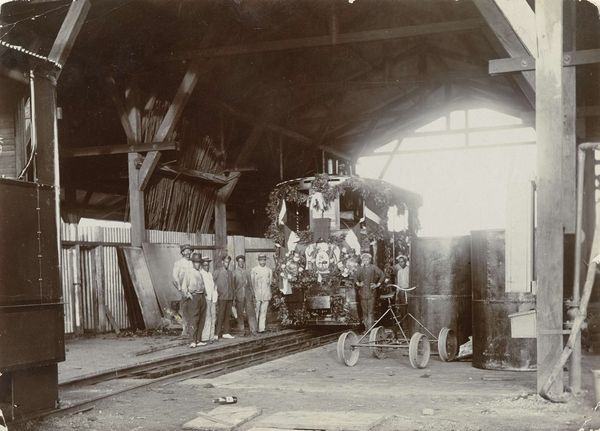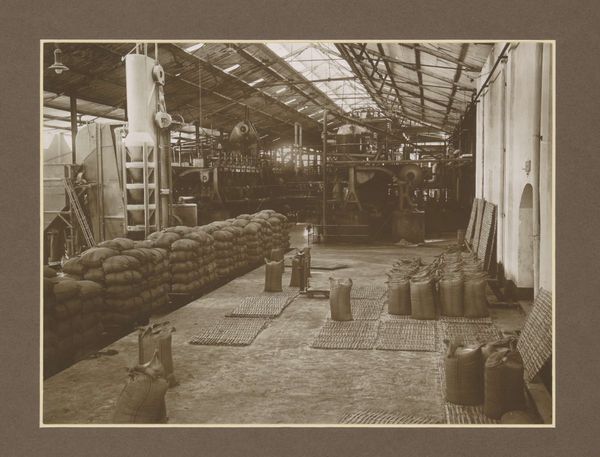
Dimensions: image: 106 x 164 mm
Copyright: CC-BY-NC-ND 4.0 DEED, Photo: Tate
Curator: This is "Glass works. Indianapolis, Indiana," by Lewis Hine. Editor: It's immediately striking how the composition emphasizes the dense industrial space, almost claustrophobic in its arrangement. Curator: Indeed. Hine, known for his social reform photography, captures the material conditions of labor here. Consider the heat, the repetitive actions, the sheer physicality of shaping molten glass. Editor: The photo's gray tones speak to the grim reality of the workers' conditions. Notice the light filtering weakly from the roof; it highlights the figures but fails to brighten the overall atmosphere. Curator: We see a system. The workers are part of a network, each a component in the transformation of raw materials into finished products. Editor: Looking at this image, I'm reminded how critical it is to acknowledge the exploitation inherent in industrial progress. Curator: Precisely. Hine compels us to confront these uncomfortable truths. Editor: Absolutely. The image has a stark, lasting power.
Comments
tate 6 months ago
⋮
http://www.tate.org.uk/art/artworks/hine-glass-works-indianapolis-indiana-p79935
Join the conversation
Join millions of artists and users on Artera today and experience the ultimate creative platform.
tate 6 months ago
⋮
This object is one of a group of twenty-two black and white photographs in Tate’s collection (Tate P79917–P79938), which all relate to American photographer Lewis Hine’s work for the National Child Labor Committee (NCLC) in the US during the 1910s. Eleven of the photographs are Hine’s own documents of various panels that he made for exhibitions of his work. These combine text, photographs and drawn or painted pictures that provide information about children’s working conditions and use various arguments to suggest that child labour should be reformed or banned. While most primarily focus on the ills of child labour (‘Industry saves at society’s expense’), some highlight instances of recent reforms, extolling their benefits (‘New Orleans conditions: these high standards pay’). The accompanying images on these panels generally include photographs and illustrations of child labourers, as well as maps of America and representations of homes and workplaces. The other ten photographs are prints of pictures that Hine took of working children, some of which are also used in the exhibition panels. Most of these show children within or outside of their workplaces, although some depict related scenes, including one in which a boy attends juvenile court ‘charged with stealing a bicycle’. The photographs vary in size and most incorporate a photocopy of a caption. The captions relating to the photographic images (as opposed to the exhibition panels) often specify a number, such as ‘Neg. #3785’, and state the location in which the picture was taken, the date, and information about the subjects such as their age and profession.
